Giacobbe Giusti, Torcello, Last Judgement

Giacobbe Giusti, Torcello, Last Judgement

http://wwwbisanzioit.blogspot.it/2014/03/la-basilica-di-smaria-dellassunta_30.html

Giacobbe Giusti, Torcello, Last Judgement

Giacobbe Giusti, Torcello, Last Judgement

http://wwwbisanzioit.blogspot.it/2014/03/la-basilica-di-smaria-dellassunta_30.html
Giacobbe Giusti, Treasure of Priam (Gold of Troy)
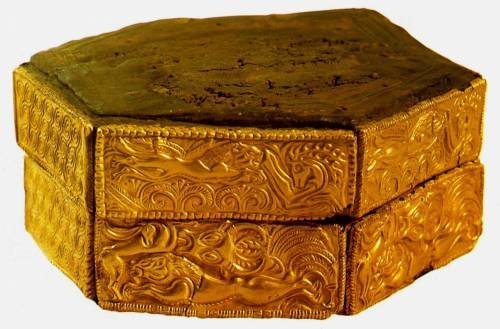
Casket
Giacobbe Giusti, Treasure of Priam (Gold of Troy)
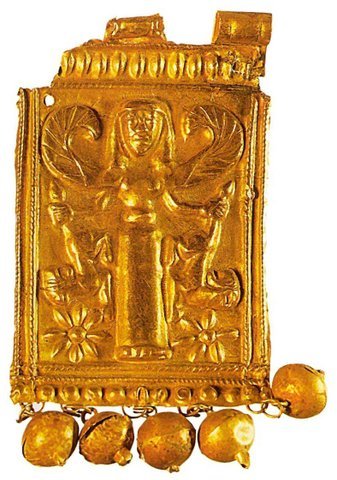
Memorial plaque with pendants in the shape of a pomegranate fruit
Giacobbe Giusti, Treasure of Priam (Gold of Troy)
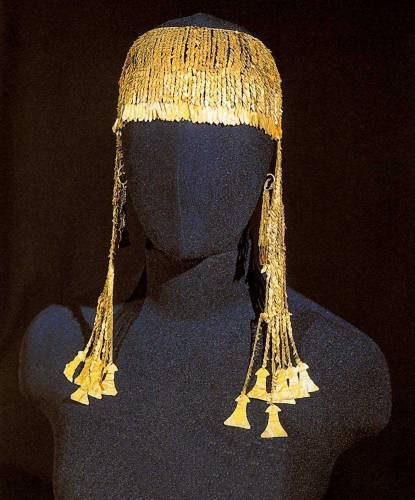
Great dіadema, earrings
Giacobbe Giusti, Treasure of Priam (Gold of Troy)
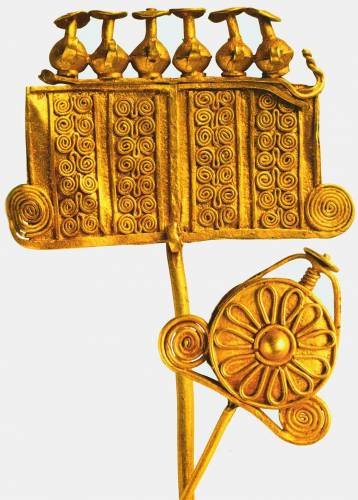
Brooch-fibula
Giacobbe Giusti, Treasure of Priam (Gold of Troy)
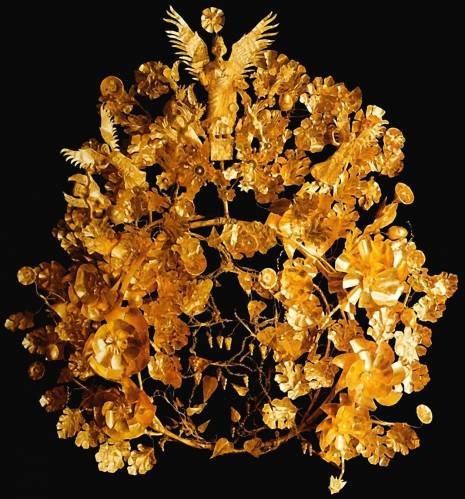
Tiara with ornaments in the form of oak leaves
Giacobbe Giusti, Treasure of Priam (Gold of Troy)
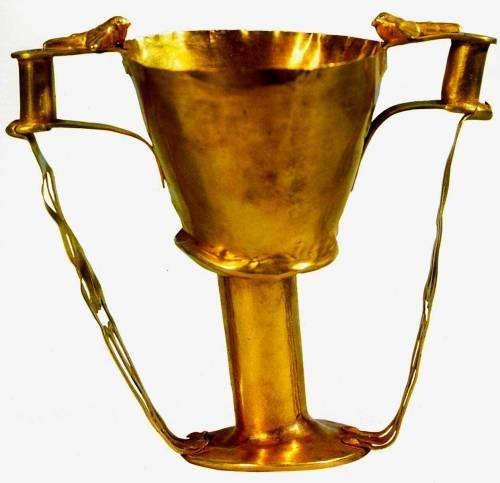
Nestor Cup
Giacobbe Giusti, Treasure of Priam (Gold of Troy)
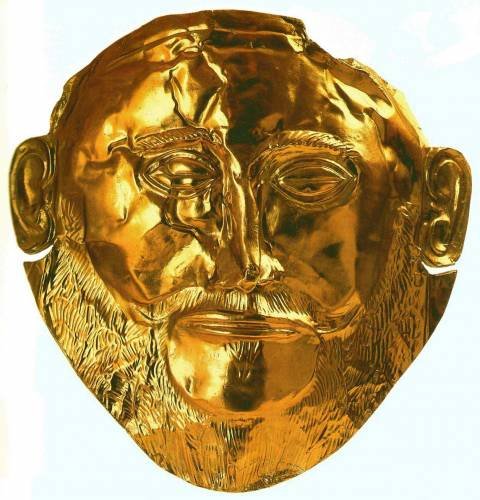
funeral mask
Heinrich Schliemann mistakenly believed that he had found the treasure of King Priam of Troy. But after a detailed study revealed that the discovery dates back to 2400-2300 years BC and is not related to the ancient king, as he began to rule only through 1000.
https://steemit.com/archeology/@history/treasure-of-priam-gold-of-troy
Giacobbe Giusti, Santa Maria Nuova cathedral, Monreale, Sicily

Giacobbe Giusti, Santa Maria Nuova cathedral, Monreale, Sicily

Cathedral of Monreale, Sicily, Italy. Mosaics of the north side of the nave.
Giacobbe Giusti, Santa Maria Nuova cathedral, Monreale, Sicily

Cathedral of Monreale, Sicily, Italy. Mosaics of the south side of the nave.
Giacobbe Giusti, Santa Maria Nuova cathedral, Monreale, Sicily

Italy, Sicily, Monreale, Cathedral
Giacobbe Giusti, Santa Maria Nuova cathedral, Monreale, Sicily
https://en.wikipedia.org/wiki/Monreale#The_Cathedral

The bronze head of Augustus from Meroë on display in the British Museum
|
|
| Material | Bronze |
|---|---|
| Size | 46.2 cm high |
| Created | 27-25 BC |
| Present location | British Museum, London |
| Identification | 1911,0901.1 |
The Meroë Head, or Head of Augustus from Meroë is a larger-than-life-size bronze head that was found in the ancient Nubian site of Meroë in Sudan. Long admired for its striking appearance and perfect proportions, it is now part of the British Museum‘s collection.[1][2]
The head was excavated by the British archaeologistJohn Garstang in December 1910 at Meroë, which had been the capital of the Kingdom of Kush for several centuries. The sculpture was found buried beneath a monumental stairway that lead to an altar of victory. This intended insult of burying the statue resulted in the head being well presented[3] after being buried for over 1900 years. The bust was donated to the British Museum by the Sudan Excavation Committee with the support of the National Art Collections Fund in 1911.[4]
The head had clearly been hacked off a large statue made in honour of the Roman Emperor Augustus. The Greek historian Strabo mentions in his chronicles that numerous towns in Lower Egypt were adorned with statues of Augustus before an invading Kushite army looted many of them in 25 BC. Although the Roman military successfully invaded Kushite territory and reclaimed many statues, they were unable to reach as far south as the Kushite capital itself. The placing of the Emperor’s head below the shrine’s steps was designed to symbolically denigrate the reputation of Augustus in the eyes of the Meroitic aristocracy.[5]
The Meroë Head is larger than life-size and mimics Greek art by portraying Augustus with classical proportions; it was clearly designed to idealise and flatter the Emperor. Made of bronze, the eyes are inset with glass pupils and calcite irises. It is the preservation of the eyes (which are frequently lost in ancient bronze statues) which makes this statue so startlingly realistic. The emperor’s head turns to his right and gazes powerfully into the distance. His hair falls onto his brow in waves that are typical of Augustus’s portraits.[5] The British Museum has several other notable bronze heads of Roman Emperors including an image of Claudius. The heads are thought to have been made locally but based on moulds created in Rome.[5]

http://monteprama.blogspot.it/2014/06/quatro-corna-e-un-segno-a.html
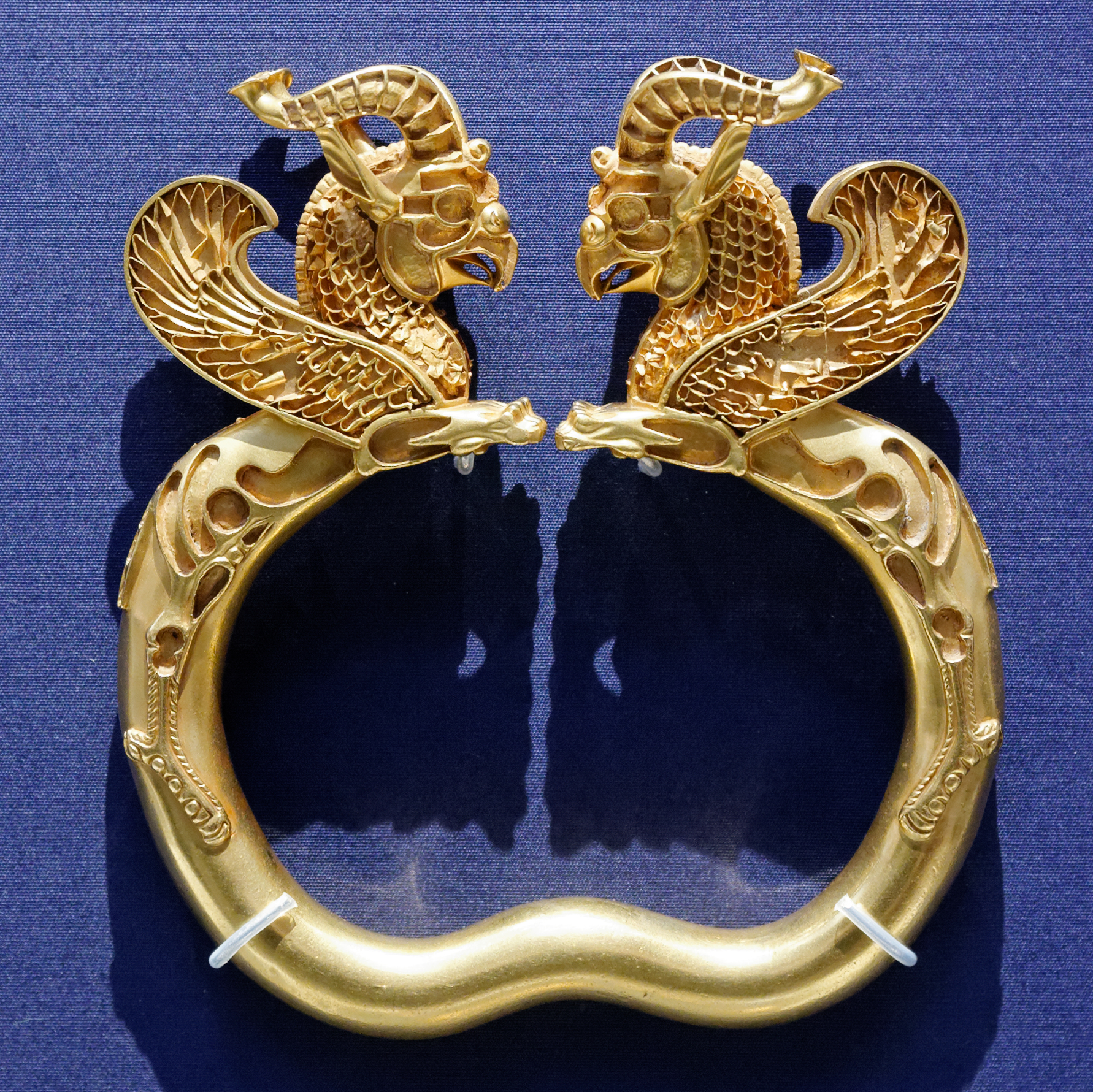
One of a pair of armlets from the Oxus Treasure, which has lost its inlays of precious stones or enamel

Oxus chariot model, from the region of Takht-i Kuwad, Tadjikistan, Achaemenid Persian, 5th-4th century BC. British Museum

Gold statuettes carrying barsoms, with a rider behind

The statuette of the naked Youth
https://en.wikipedia.org/wiki/Oxus_Treasure

Roman gladiator helmet from Pompeii, Italy, 1st century AD
https://en.wikipedia.org/wiki/British_Museum#Department_of_Greece_and_Rome

The Battle of Anghiari (1505) is a lost painting by Leonardo da Vinci, at times referred to as “The Lost Leonardo”, which some commentators believe to be still hidden beneath one of the later frescoes in the Salone dei Cinquecento (Hall of the Five Hundred) in the Palazzo Vecchio, Florence. Its central scene depicted four men riding raging war horses engaged in a battle for possession of a standard, at the Battle of Anghiari in 1440.
Many preparatory studies by Leonardo still exist. The composition of the central section is best known through a drawing by Peter Paul Rubens in the Louvre, Paris. This work, dating from 1603 and known as The Battle of the Standard, was based on an engraving of 1553 by Lorenzo Zacchia, which was taken from the painting itself or possibly derived from a cartoon by Leonardo. Rubens succeeded in portraying the fury, the intense emotions and the sense of power that were presumably present in the original painting. Similarities have been noted between this Battle of Anghiari and the Hippopotamus Hunt painted by Rubens in 1616.
In March 2012, it was announced that a team led by Maurizio Seracini has found evidence that the painting still exists on a hidden inner wall behind a cavity, underneath a section of Vasari‘s fresco in the chamber.[1] The search was discontinued in September 2012, without any further progress having been made, due to conflict among the involved parties.[2]

Study of Two Warriors’ Heads for The Battle of Anghiari (c. 1504–5). Black chalk or charcoal, some traces of red chalk on paper, 19.1 × 18.8 cm. Museum of Fine Arts, Budapest
In 1504 Leonardo da Vinci was given the commission by gonfaloniere Piero Soderini, a contract signed by Niccolò Machiavelli, to decorate the Hall of Five Hundred. At the same time his rival Michelangelo, who had just finished his David, was designated the opposite wall. This was the only time that Leonardo da Vinci and Michelangelo worked together on the same project. The painting of Michelangelo depicted an episode from the Battle of Cascina, when a group of bathing soldiers was surprised by the enemy. However Michelangelo did not stay in Florence long enough to complete the project. He was able to finish his cartoon, but only began the painting. He was invited back to Rome in 1505 by the newly appointed Pope Julius II and was commissioned to build the Pope’s tomb.
Leonardo da Vinci drew his large cartoon in the Basilica of Santa Maria Novella, on the east wall, depicting a scene from the life of Niccolò Piccinino, a condottiere in the service of duke Filippo Maria Visconti of Milan. He drew a scene of a violent clash of horses and a furious battle of men fighting for the flag in the Battle of Anghiari. Giorgio Vasari in his book Lives of the Most Excellent Painters, Sculptors, and Architects praised the magistral way Leonardo had put this scene on paper:
It would be impossible to express the inventiveness of Leonardo’s design for the soldiers’ uniforms, which he sketched in all their variety, or the crests of the helmets and other ornaments, not to mention the incredible skill he demonstrated in the shape and features of the horses, which Leonardo, better than any other master, created with their boldness, muscles and graceful beauty.
Leonardo built an ingenious scaffold in the Hall of Five Hundred that could be raised or folded in the manner of an accordion. This painting was to be his largest and most substantial work. Since he had a bad experience with fresco painting (The Last Supper; refectory of Santa Maria delle Grazie, Milan), he wanted to apply oil colours on the wall. He began also to experiment with such a thick undercoat (possibly mingled with wax), that after he applied the colours, the paint began to drip. Trying to dry the painting in a hurry and save whatever he could, he hung large charcoal braziers close to the painting. Only the lower part could be saved in an intact state, the upper part couldn’t dry fast enough and the colours intermingled. Leonardo then abandoned the project.[citation needed]
Michelangelo’s and Leonardo’s unfinished paintings adorned the same room together for almost a decade (1505–1512). The cartoon of Michelangelo’s painting was cut in pieces by Bartolommeo Bandinelli out of jealousy in 1512. The centerpiece of The Battle of Anghiari was greatly admired and numerous copies were made for decades.[citation needed]
During the mid-16th century (1555–1572), the hall was enlarged and restructured by Vasari and his helpers, on the instructions of Grand Duke Cosimo I; in order that the Duke could hold court in this important chamber of the palace. In the course of the renovations, the remnants of famous (but unfinished) artworks from the previous plan of decoration for the hall, were lost; including The Battle of Cascina by Michelangelo and The Battle of Anghiari by Leonardo da Vinci.
Vasari himself painted new frescoes on the now-extended walls.On the walls are large and expansive frescoes that depict battles and military victories by Florence over Pisa and Siena :
https://en.wikipedia.org/wiki/The_Battle_of_Anghiari_(painting)


Italy, Sicily, Palermo, Capella Palatina

Absidi, crociera, cupola e transetto.
Dettaglio absidiola sinistra

Absidiola di San Pietro
…
Italy, Sicily, Palermo, Capella Palatina



Roger II, mosaïque de l’Église de la Martorana de Palerme

Mosaïque de la Nativité.

Le plafond de la nef.


Arcos sarracenoss e mosaicos bizantinos se complementam na Capella Palatina.
Mosaico de aparejo tessellatum
CAPILLA PALATINA DE PALERMO. MOSAICOS BIZANTINOS

Вход Господень в Иерусалим (южный трансепт)

Жертвоприношение Авраама

Строительство Вавилонской башни
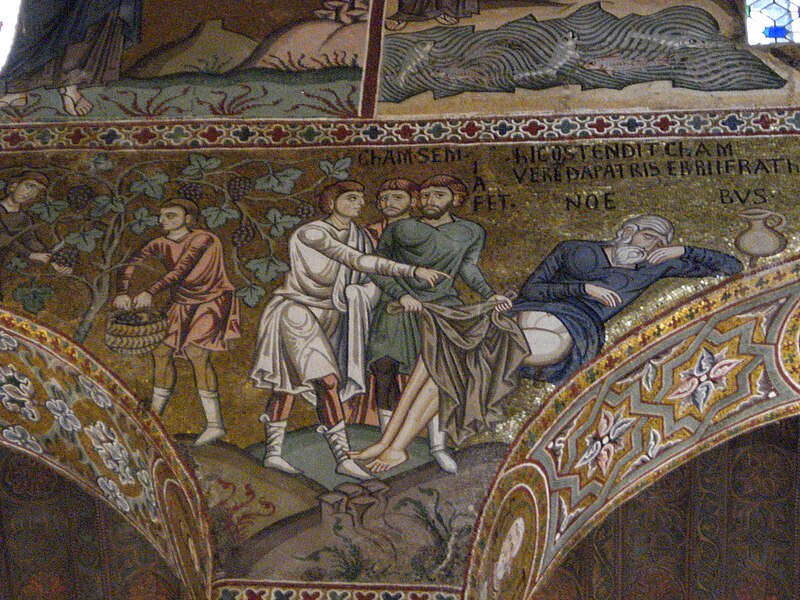
Грех Хама

Исаак благословляет Иакова

Ной выпускает голубя из ковчега

Лестница Иакова

Южная апсида с мозаикой Рождества Христова